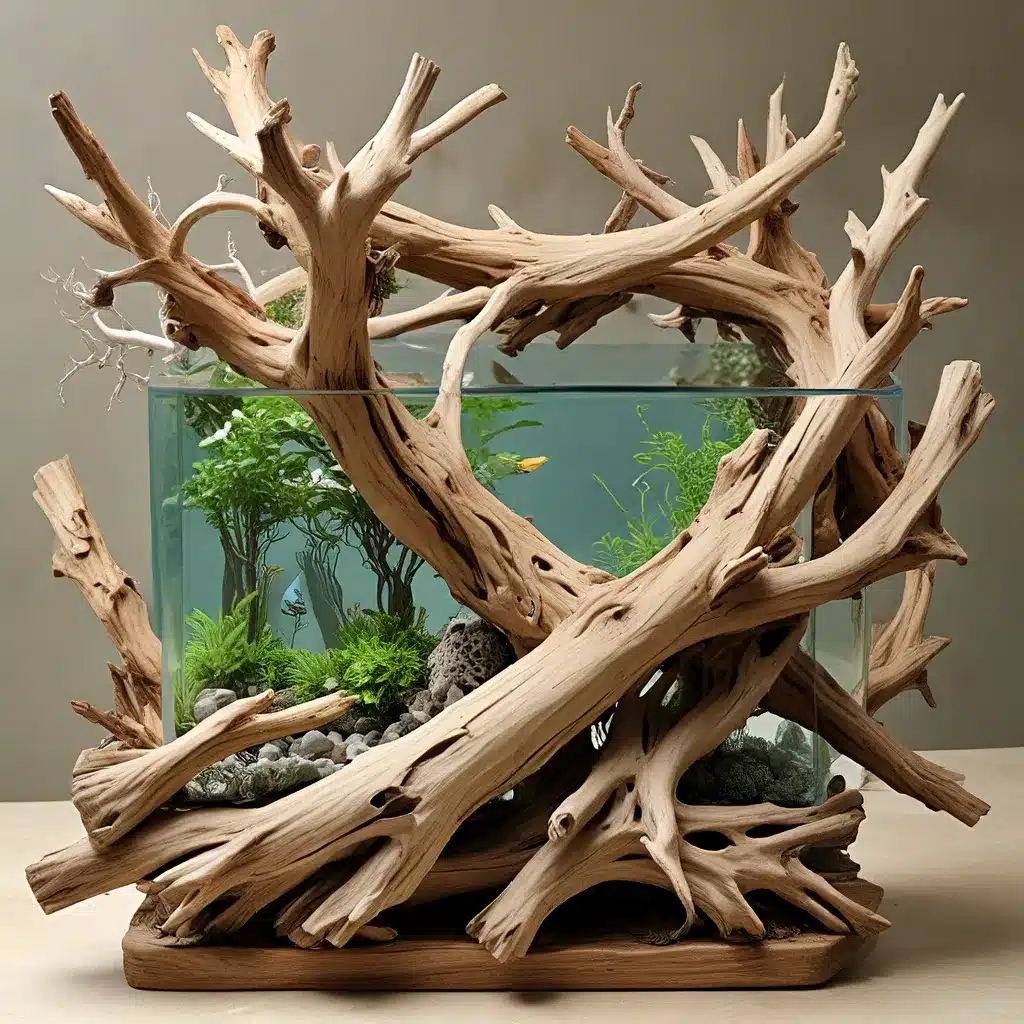
Unlocking the Secrets of Driftwood in Aquascaping
Aquarium enthusiasts have long been captivated by the natural beauty and functionality that driftwood can bring to their underwater habitats. As a versatile and visually striking element, driftwood has the power to transform a simple tank into a captivating, nature-inspiredscape. However, beyond its aesthetic appeal, driftwood can also play a crucial role in shaping the overall ecosystem and water chemistry within your aquarium.
Driftwood, formed from the weathered remains of fallen trees and branches, is a testament to the dynamic interplay between land and water. As these wooden structures make their way into aquatic environments, they begin to release tannins, humic substances, and other organic compounds that can profoundly impact the aquarium’s water parameters. Understanding and harnessing these natural processes is key to creating thriving, balanced aquatic ecosystems.
Tannins and Humic Substances: The Aquarium’s Alchemists
The release of tannins and humic substances from driftwood is often misunderstood or viewed negatively by some aquarium hobbyists. However, these natural compounds can play a vital role in shaping the aquatic environment and providing benefits for the inhabitants.
Tannins, derived from the decomposition of the wood, impart a characteristic amber or tea-like coloration to the water, creating the sought-after “blackwater” aesthetic. Beyond their visual impact, tannins have been shown to possess antimicrobial and anti-parasitic properties, potentially aiding in the prevention and treatment of various fish ailments. Additionally, tannins can help buffer the water’s pH, creating a more stable and suitable environment for many sensitive species.
Humic substances, another byproduct of driftwood decomposition, are a complex mix of organic molecules that can further enhance the water’s chemical profile. These substances can chelate heavy metals, reducing their bioavailability and toxicity to aquatic life. Humic acids can also serve as a natural source of carbon, supporting the growth of beneficial microorganisms and contributing to the overall health of the aquarium ecosystem.
Driftwood as a Functional Aquascape Element
Beyond its impact on water chemistry, driftwood can also play a vital role in the physical and biological structure of your aquarium. Its intricate shapes and textures can provide valuable hiding places, spawning sites, and perches for a wide range of aquatic inhabitants, from fish to invertebrates and even aquatic plants.
Carefully selected and positioned driftwood can also serve as a functional anchor for epiphytic plants, allowing them to thrive and contribute to the aquarium’s natural aesthetic. These “living” driftwood structures can become a true centerpiece, blending the boundaries between land and water and creating a truly immersive experience for the observer.
Incorporating Driftwood into Your Aquascape
When incorporating driftwood into your aquascape, it’s essential to consider both its practical and aesthetic implications. Begin by selecting high-quality, sustainably sourced driftwood that is suitable for your aquarium’s size and inhabitants. Carefully inspect the wood for any signs of decay, insect infestation, or potential contaminants, and thoroughly clean and disinfect it before adding it to your tank.
Placement of the driftwood is crucial, as it can dramatically influence the overall flow and visual balance of your aquascape. Experiment with different arrangements, considering factors such as depth, height, and orientation to create a harmonious and naturalistic composition. Incorporating driftwood alongside other natural elements, such as rocks, plants, and substrate, can further enhance the realism and cohesion of your underwater landscape.
Maintaining Driftwood in the Aquarium
Proper maintenance of driftwood is essential to ensure the longevity and continued benefits it provides to your aquarium. Regular water changes and the use of chemical filtration media, such as activated carbon or resins, can help manage the release of tannins and maintain water clarity. Additionally, monitoring the wood for signs of deterioration or the formation of biofilms can help you proactively address any issues before they become problematic.
In some cases, you may need to periodically scrub or lightly sand the driftwood to remove excess buildup or to revive its natural appearance. Remember, the decomposition of driftwood is a natural process, and embracing its evolving aesthetic can be part of the joy of maintaining a botanical-style aquarium.
Embracing the Aquatic Ecosystem
Ultimately, the incorporation of driftwood into your aquascape is about more than just creating a visually appealing display. It’s about embracing the natural processes and dynamic ecosystem that can thrive within the confines of your aquarium. By understanding the role of driftwood and its influence on water chemistry and habitat structure, you can cultivate a truly captivating and biologically diverse underwater world.
As you navigate the world of aquarium driftwood, remember to stay curious, experiment, and embrace the ever-changing beauty and functionality it can bring to your aquatic oasis. With a little knowledge and a touch of creativity, you can transform your tank into a true showcase of nature’s wonders.

